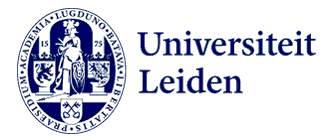Distribusi Skabies pada Peternakan Sapi Potong di Kabupaten Barru Provinsi Sulawesi Selatan
Distribution of Scabies in Beef Cattle in Barru District, South Sulawesi
DOI:
https://doi.org/10.46549/jipvet.v10i2.97Keywords:
Scabies, beef cattle, distribution, incidence rate, riskAbstract
Abstract
Beef cattle farms in Barru district are susceptible to various diseases, including scabies. This study aims to analyze data about the distribution of disease temporally by measuring the spreading speed, and spatially by mapping risk areas for scabies over the past three years. The data of this study was collected using the records from Dinas Peternakan and conducting interviews using structured questionnaires. This research was a descriptive study by measuring the incidence rate and describing the risk map using geographic information system (GIS). The results of this study indicate that, based on the incidence rate, the average distribution rate of scabies in beef cattle in Barru is 13 cases per 10.000 head/year. This incidence rate always increases every year. Furthermore, the highest incidence of the disease occurs in Mallusetasi with an incidence rate of 35 cases per 10 000 head/year. The three areas that are classified as high risk are Mallusetasi, Tanete Riaja, and Barru. Control measures that have been carried out were not successful to reduce the spread of the disease.
Keywords : Beef cattle; Distribution; Incidence rate; Risk; Scabies
Abstrak
Peternakan sapi potong di Kabupaten Barru rentan terhadap berbagai penyakit, termasuk skabies. Penelitian ini bertujuan menganalisis data distribusi kejadian penyakit secara temporal dengan mengukur kecepatan penyebaran, dan secara spasial dengan memetakan wilayah berisiko skabies selama tiga tahun terakhir. Data dalam penelitian ini menggunakan rekapan dari Dinas Peternakan dan wawancara mendalam menggunakan kuesioner terstruktur. Penelitian ini mengunakan metode deskriptif dengan mengukur incidence rate dan menggambarkan peta risiko menggunakan geographic information system (GIS). Hasil penelitian ini menunjukkan bahwa berdasarkan incidence rate, kecepatan rata-rata penyebaran skabies pada sapi potong di Kabupaten Barru sebesar 13 kasus per 10000 ekor—tahun. Nilai incidence rate tersebut selalu meningkat setiap tahunnya. Kejadian penyakit paling tinggi terjadi di kecamatan Mallusetasi dengan incidence rate sebesar 35 kasus per 10000 ekor—tahun. Terdapat 2 wilayah yang tergolong ke dalam risiko tinggi, yaitu Kecamatan Mallusetasi dan Kecamatan Tanete Riaja. Tindakan pengendalian yang telah dilakukan belum berhasil dalam mengurangi kecepatan penyebaran penyakit.
Kata kunci: Sapi potong; Incidence rate; Penyebaran; Risiko; Skabies
Downloads
References
Cameron A. 1999. Survey Toolbox for Livestock Diseases-A Practical Manual and Software Package for Active Surveillance in Developing Countries. Australia: ACIAR.
Direktorat Jendral Peternakan dan Kesehatan Hewan. 2014. Pedoman Umum Program Swasembada Daging Sapi. Jakarta (ID): Ditjennak.
Food Agricultural Organization. 2010. The State of Food and Agriculture. Rome (IT): Food Agricultural Organization.
Kementerian Pertanian. 2014. Manual Penyakit Hewan Mamalia. Cetakan kedua. Jakarta (ID): Direktorat Jendral Peterakan dan Kesehatan Hewan.
Nazir M. 2003. Metode Penelitian. Jakarta (ID): Ghalia Indonesia.
Putra A. A. G. 1994. Kajian epidemiologi dan kerugian ekonomi scabies. Laporan Koordinasi Kesehatan Hewan Wilayah Nusa Tenggara tanggal 16-18 Nopember 1994. Denpasar (ID): Balai Penyidikan Penyakit Hewan Wilayah VI.
Robert S, and Fawcett MD. 2003. Ivermectin use in scabies. Journal of American Family Physician. 68(6):1089-1092.
Sistem Informasi Kesehatan Hewan Nasional ter-integrasi. 2015. Apa itu iSIKHNAS? [Internet]. [diunduh 2019 Mar 22]. Tersedia pada: http://wiki.isikhnas.com.
Sistem Informasi Kesehatan Hewan Nasional ter-integrasi. 2015. Program Pengendalian dan Pembarantasan Penyakit [Internet]. [diunduh 2019 Mar 10]. Tersedia pada: http://wiki.isikhnas.com/Advanced _Field Epi: Manual_Disease_Control_and_Eradication_Programs/id
Subronto. 2008. Ilmu Penyakit Ternak. Yogyakarta (ID): UGM Pr.
Suhardono J. Manurung A.P., Batubara, Wasito dan Harahap. 2005. Pengendalian penyakit kudis pada kambing di Kabupaten Deli Serdang. Prosiding Seminar Nasional Teknologi Peternakan dan Veteriner. [2005 Sept 12]. Bogor (ID): Puslitbang Peternakan.
Tarigan S. 2007. Vaksin Skabies Dibutuhkan Namun Sulit Diwujudkan. Bogor (ID): Balai Besar Veteriner.
Walton S. F., Myerscough and Currie B.J., 2004. Studies in vitro on the relative efficacy of current acaricides for Sarcoptes scabiei var hominis. Tranactions of the Royal Society of Tropical Medicine and Hygiene. 94(1): 92-96.
Wardhana A.H., Manurung J. Dan Iskandar T. 2006. Skabies: Tantangan penyakit zoonosis masa kini dan masa datang. Wartazoa. 16(1):40-52.
Wendel J. dan Rompalo A. 2002. Scabies and pediculosis pubis: an update of treatment regimens and general review. Clinical Infectious Diseases. 35(2):146-151.
World Health Organization. 2014. Scabies: Neglected Top Dis 2013 [Internet]. [diunduh 2019 Mar 3]. Tersedia pada: http://www.who.int/ neglected_ diseases/ diseases/scabies/en/.
Yusdja Y. dan Winarso B. 2009. Kebijakan pembangunan sosial ekonomi menuju sistem peternakan yang diharapkan. Analisis Kebijakan Pertanian. 7(3): 269-282.
Downloads
Published
How to Cite
Issue
Section
License
License and Copyright Agreement
In submitting the manuscript to the journal, the authors certify that:
- They are authorized by their co-authors to enter into these arrangements.
- The work described has not been formally published before, except in the form of an abstract or as part of a published lecture, review, thesis, or overlay journal. Please also carefully read Jurnal Ilmu Peternakan dan Veteriner Tropis (Journal of Tropical Animal and Veterinary Science) Posting Your Article Policy at https://journal.fapetunipa.ac.id/index.php/JIPVET/publicationethics
- That it is not under consideration for publication elsewhere,
- That its publication has been approved by all the author(s) and by the responsible authorities “tacitly or explicitly“ of the institutes where the work has been carried out.
- They secure the right to reproduce any material that has already been published or copyrighted elsewhere.
- They agree to the following license and copyright agreement.
Copyright
Authors who publish with Jurnal Ilmu Peternakan dan Veteriner Tropis (Journal of Tropical Animal and Veterinary Science) agree to the following terms:
- Authors retain copyright and grant the journal right of first publication with the work simultaneously licensed under a Creative Commons Attribution License (CC BY-NC-SA 4.0) that allows others to share the work with an acknowledgment of the work's authorship and initial publication in this journal.
- Authors are able to enter into separate, additional contractual arrangements for the non-exclusive distribution of the journal's published version of the work (e.g., post it to an institutional repository or publish it in a book), with an acknowledgment of its initial publication in this journal.
- Authors are permitted and encouraged to post their work online (e.g., in institutional repositories or on their website) prior to and during the submission process, as it can lead to productive exchanges, as well as earlier and greater citation of published work.

This work is licensed under a Creative Commons Attribution-NonCommercial-ShareAlike 4.0 International License.

























.png)
